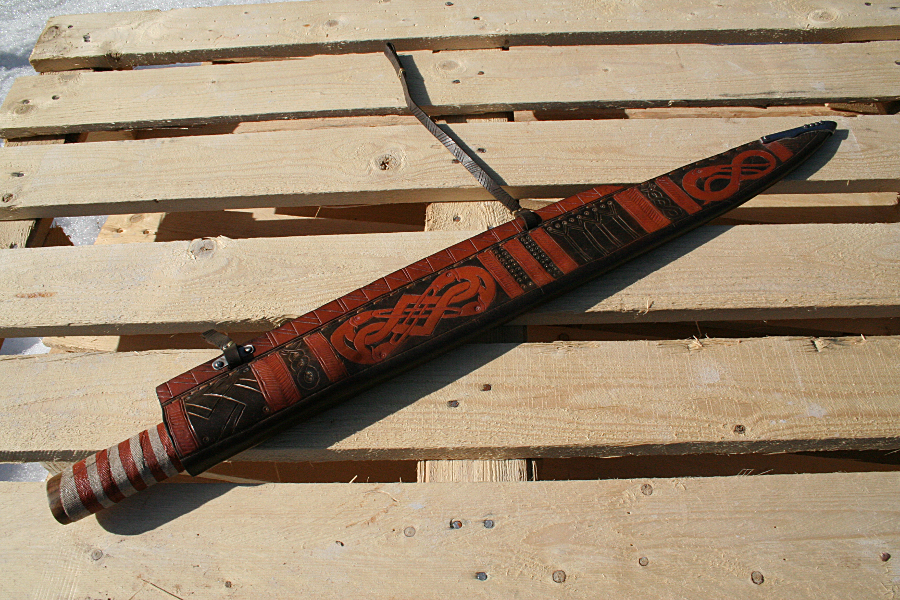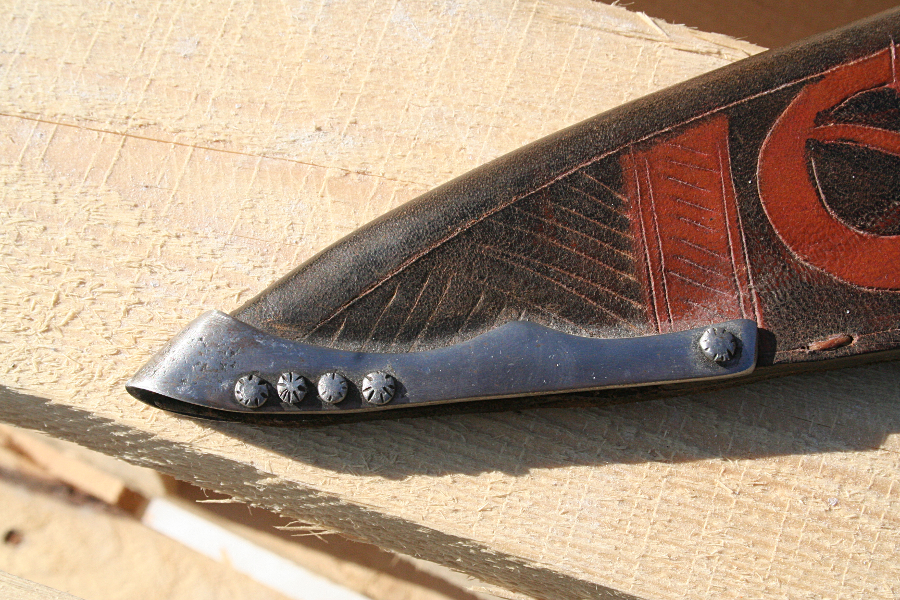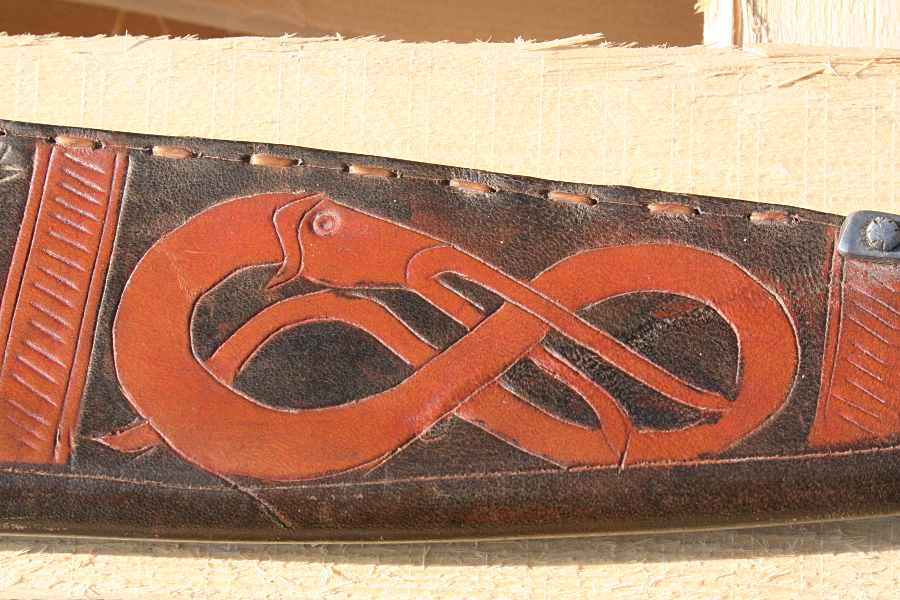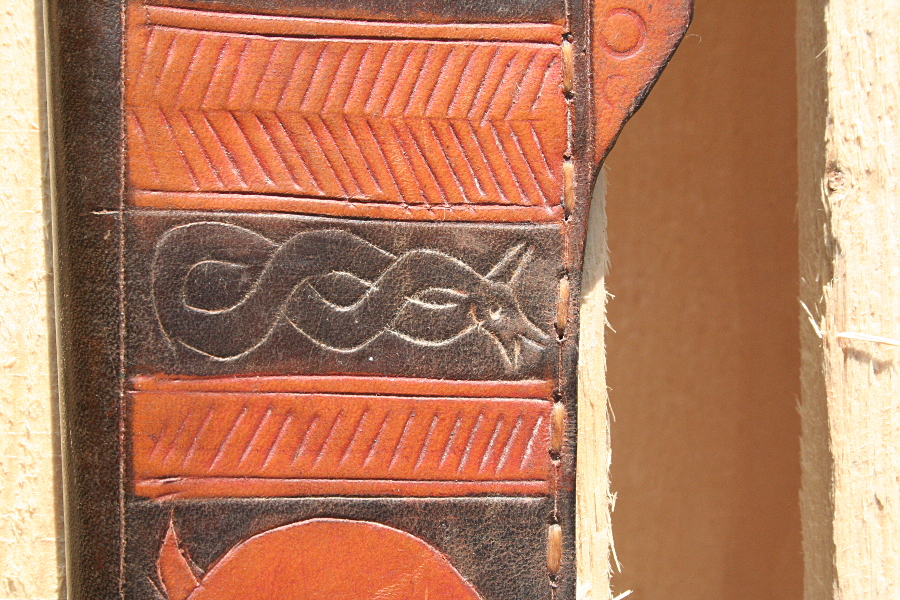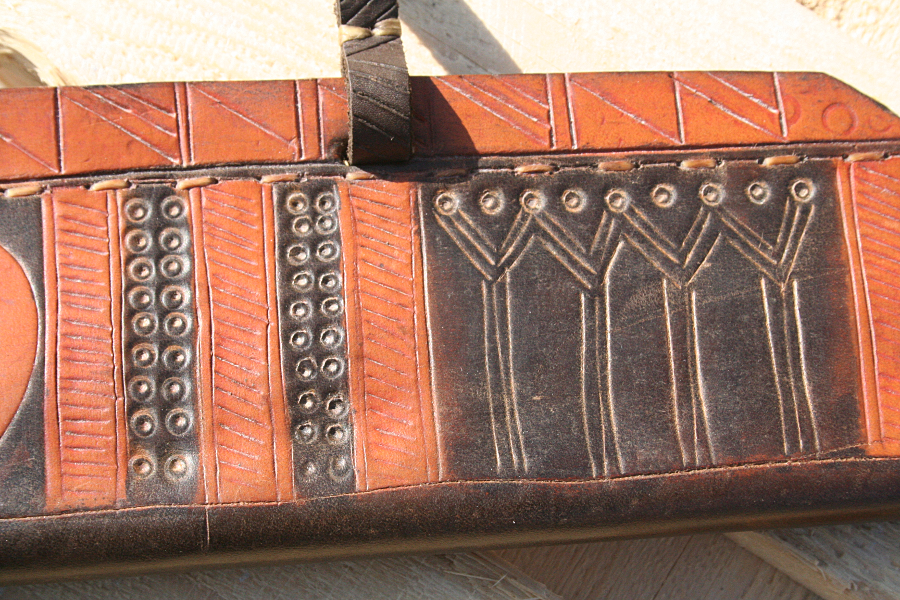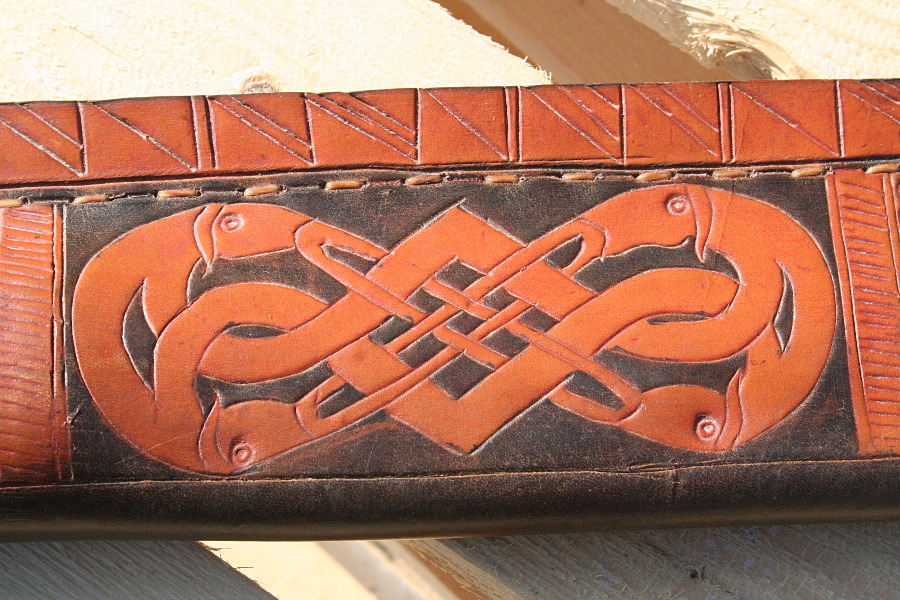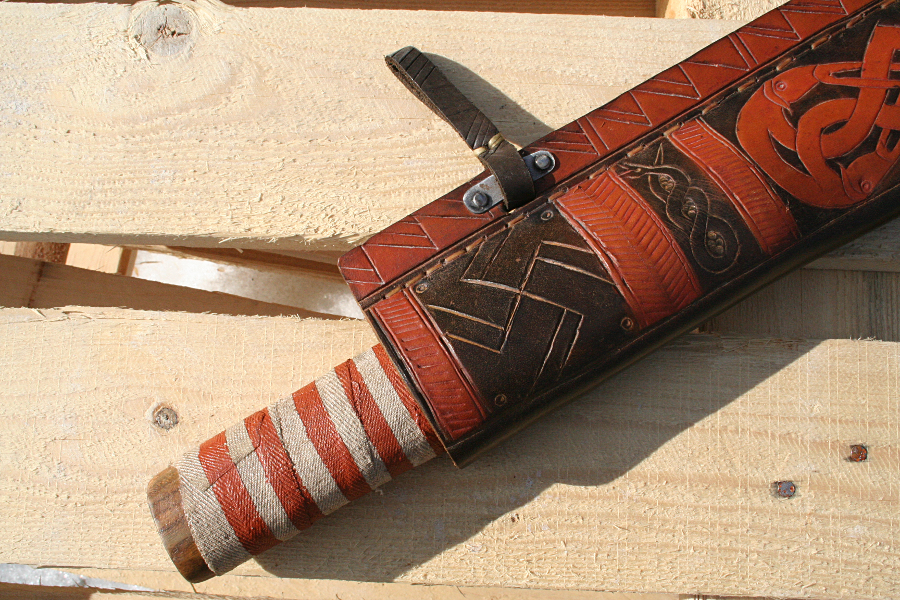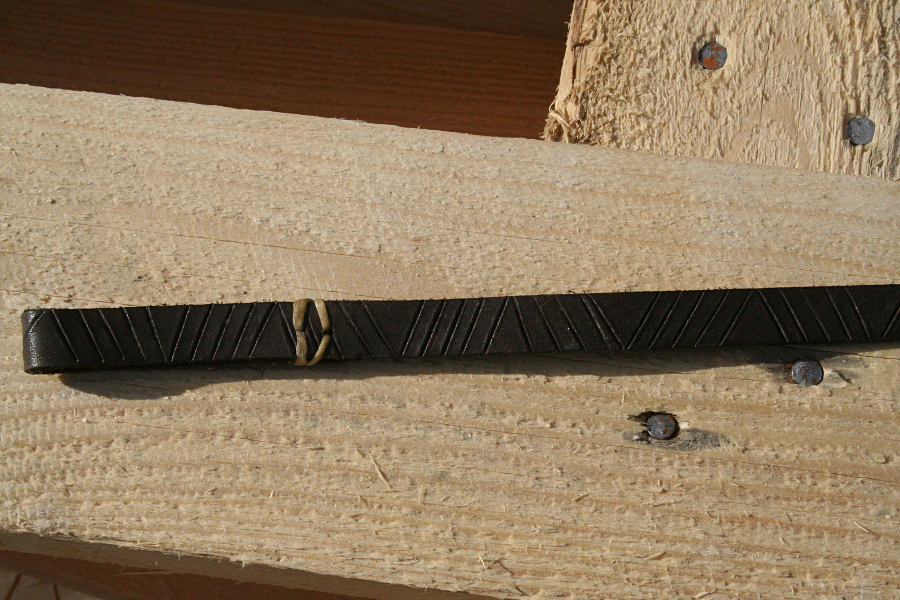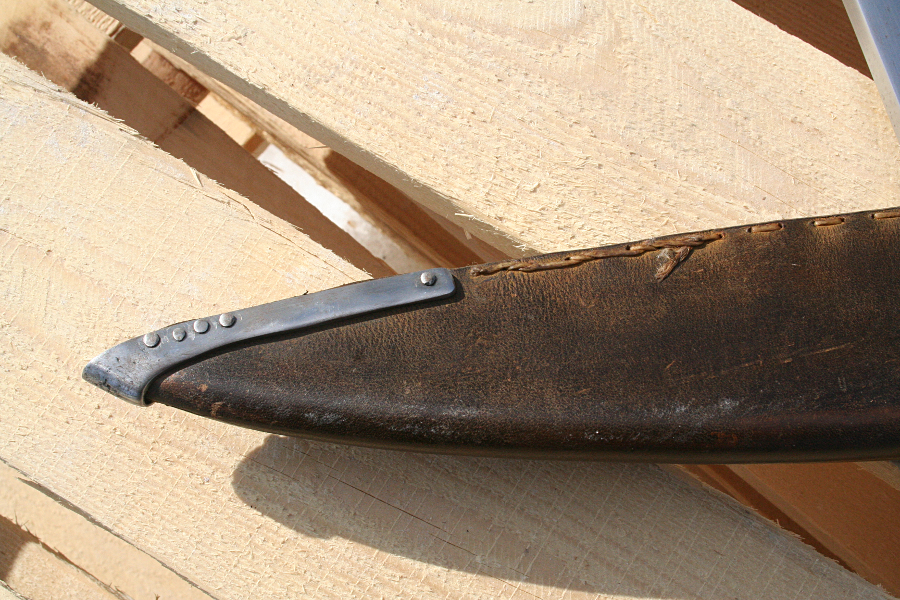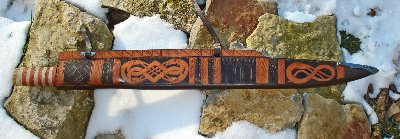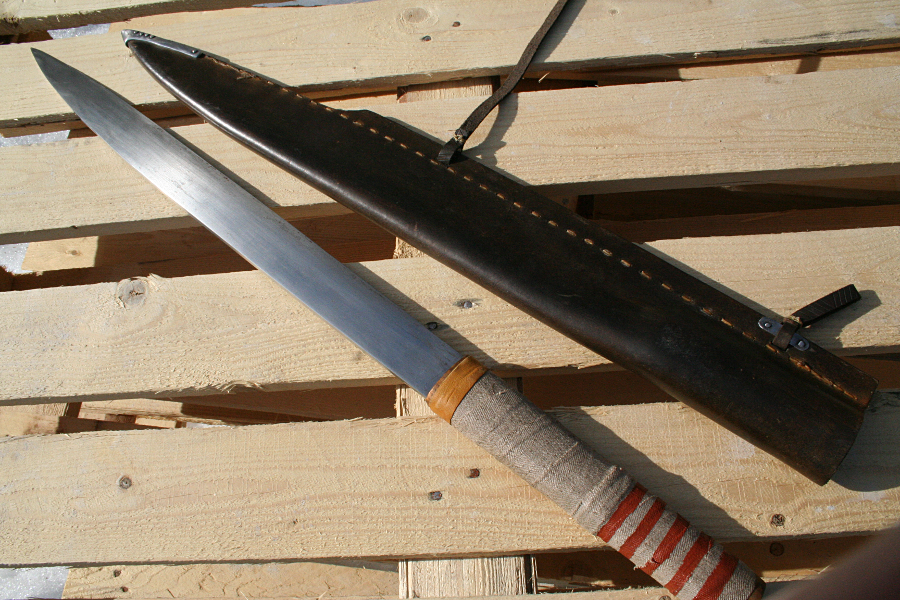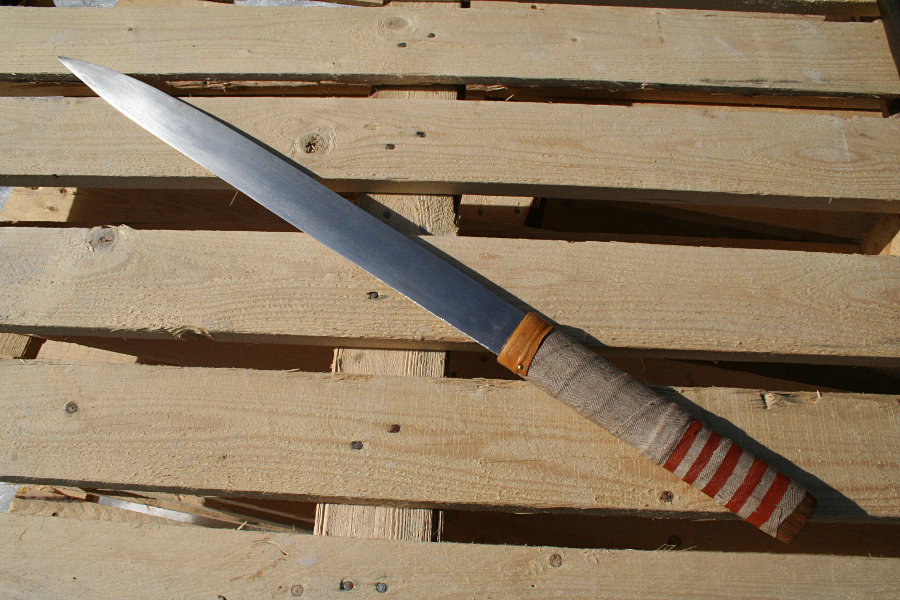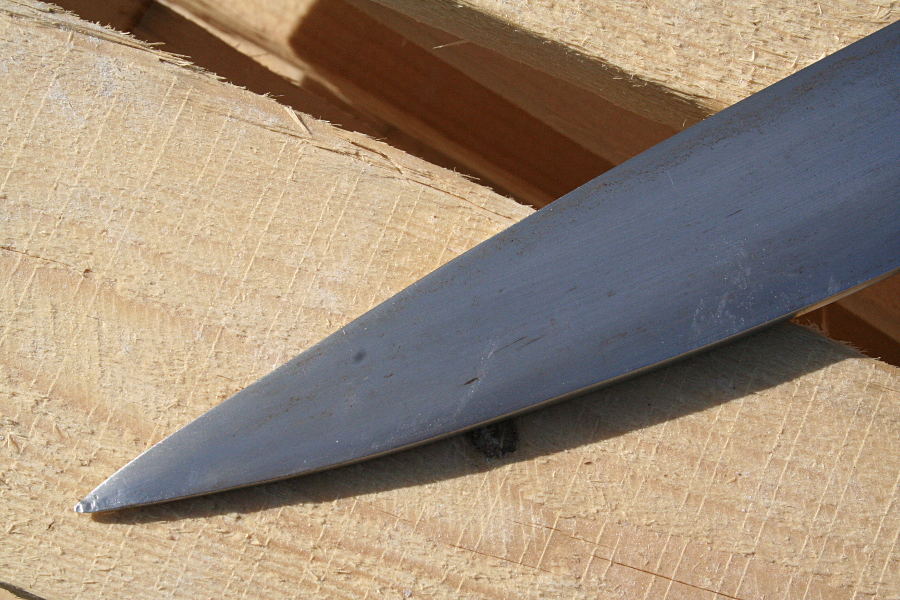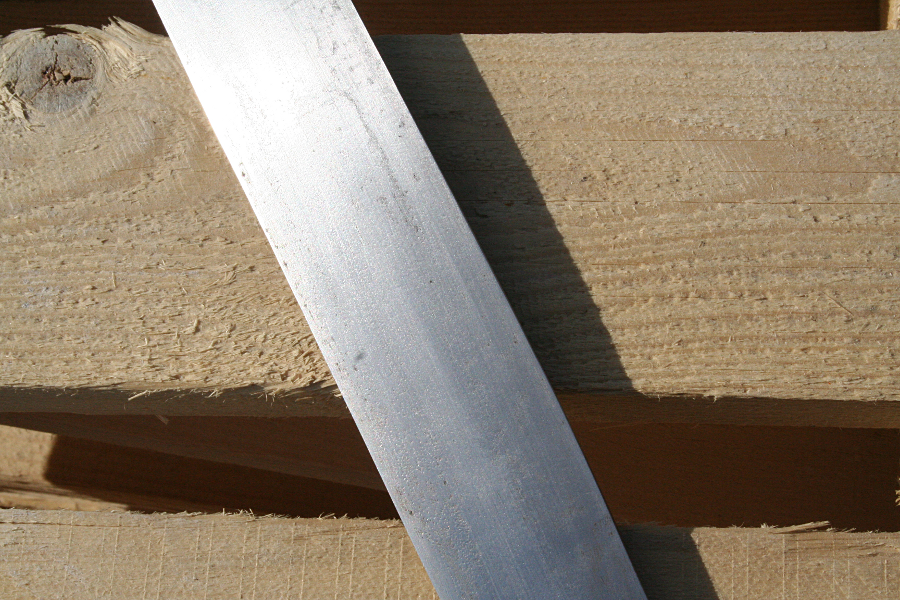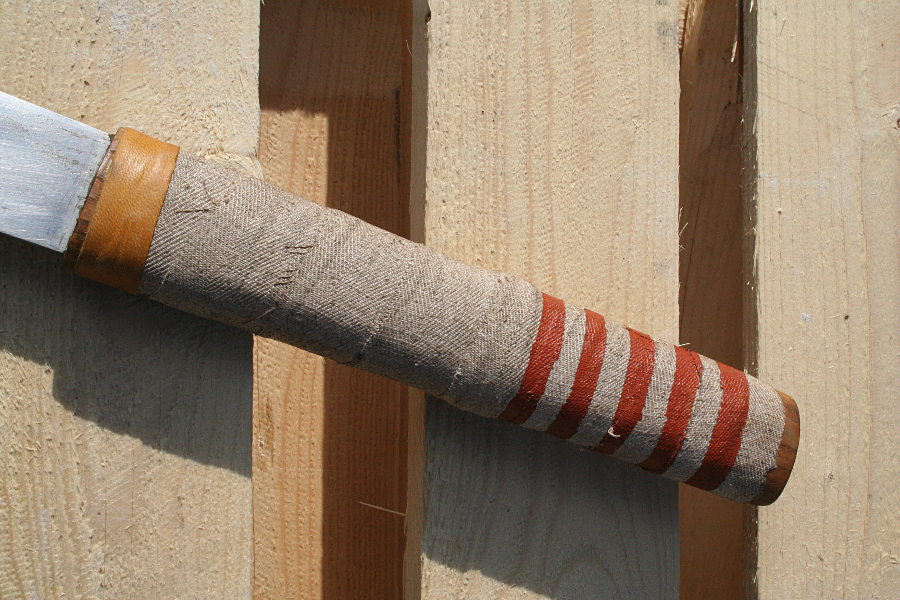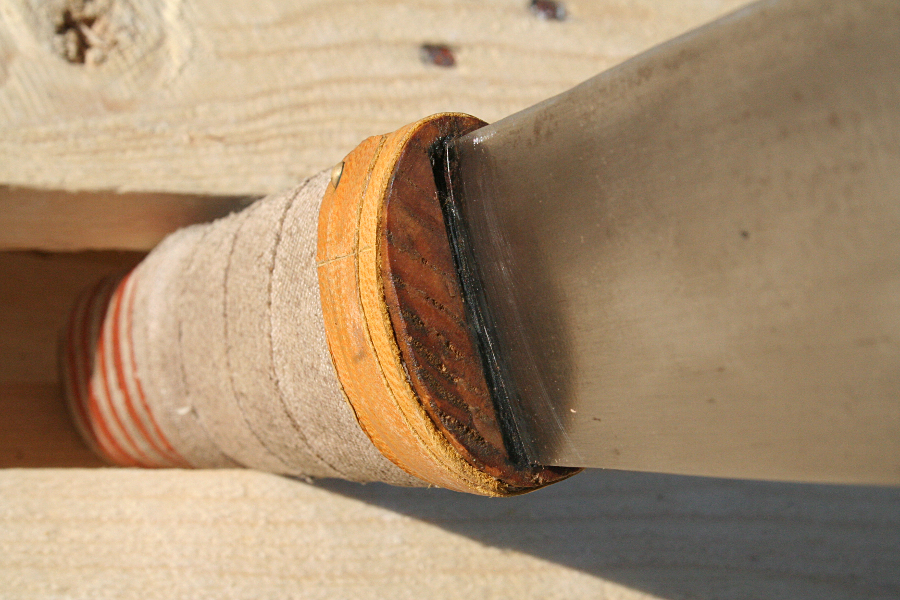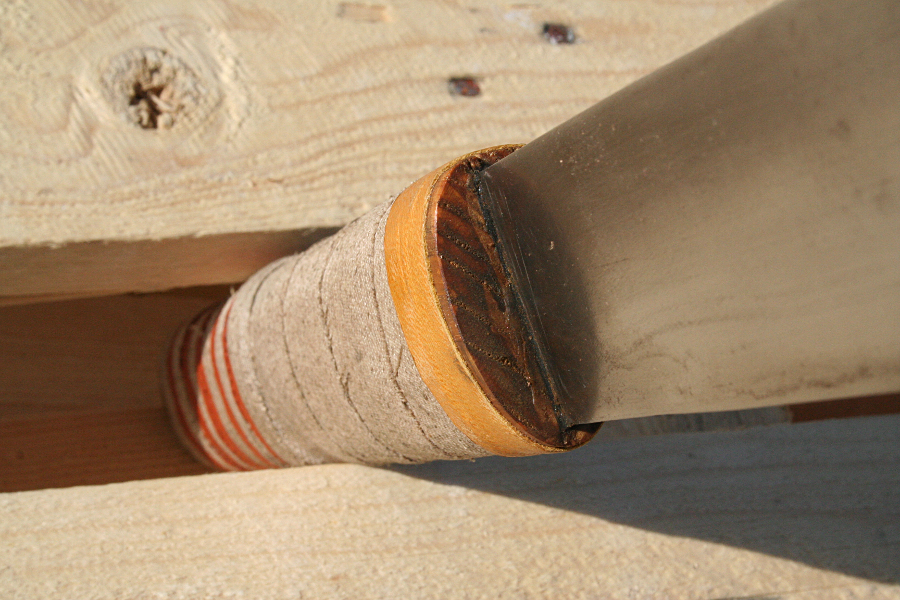Posts: 1,085 Location: Finland
Tue 09 Apr, 2013 6:50 am
Here we go!
Sax weight: 1520g
Sheath weight: 490g (Ha! Am I good or what? :D)
Overall length: 84cm
Grip length: 25.5cm
Grip width: core 4.1cm, riser and bolster 4.5cm
Grip thickness: core 2.6cm, riser and bolster 3cm
Blade length: 58.5cm
Blade width: 4.3cm at shoulders, 4.7cm at widest point (32cm from grip)
Blade thickness: 8.8mm at base, 9.65mm at thickest point (23cm from grip)
Center of gravity: 15.5cm from grip
The grip is made up of two halves, glued and wrapped with a spiral of what I guess is linen cloth? Andreas might know for sure. There's a 2cm wide leather bolster to reinforce the bottom end of the grip and give a tactile warning before your hand slips onto the blade, glued and pinned in place, and a single riser of what I would guess is the same leather under the cloth, 11cm from the bolster. The riser also serves to seat the sax very snugly in its sheath.
And here's photos! Do note, these were taken in pretty harsh daylight, which is good for capturing textures and small details but also makes especially the sheath look
much more worn that it actually is. There's patina on the blade (I tried to capture it in a couple of pictures) and wear on the furniture, but in person they're much subtler and more attractive than it looks here, just enough to give the impression of a working weapon rather than a sheltered showpiece. On the whole, it's not perfect by any measure, but the imperfections are largely cosmetic and this is definitely one case where I think the flaws merely add
character. It's a very charismatic piece. :)
First the sheath:
